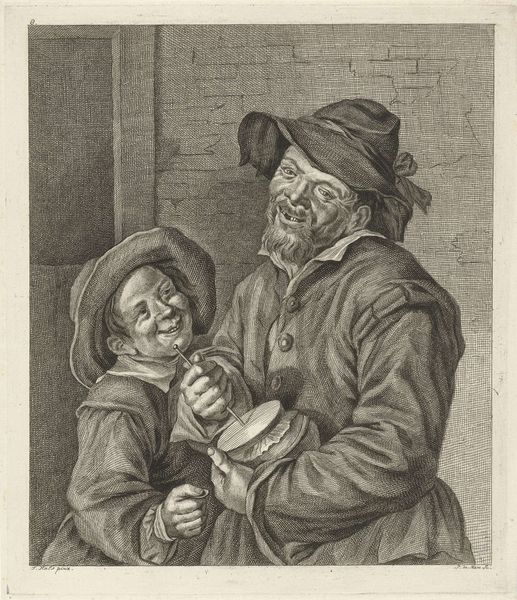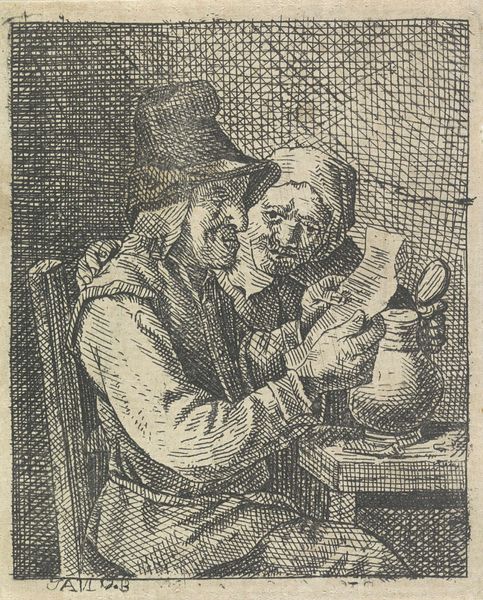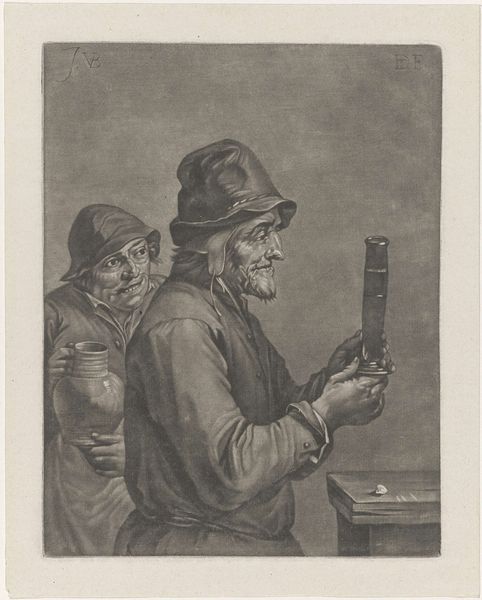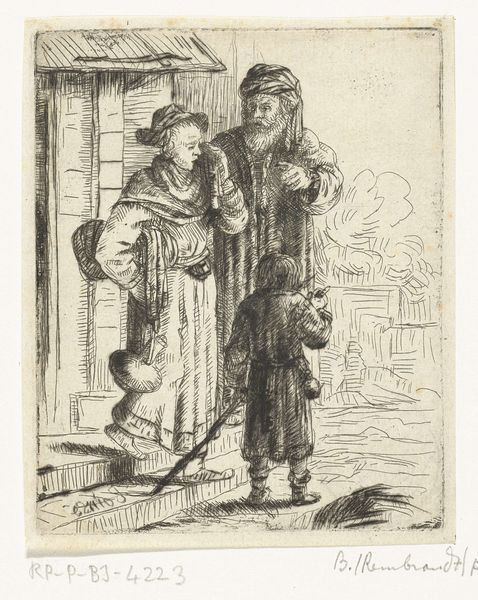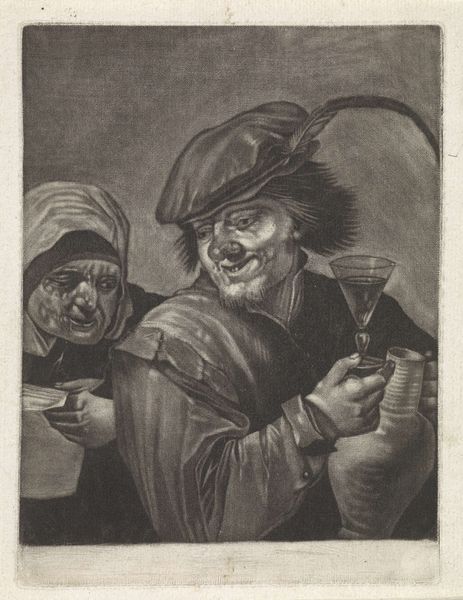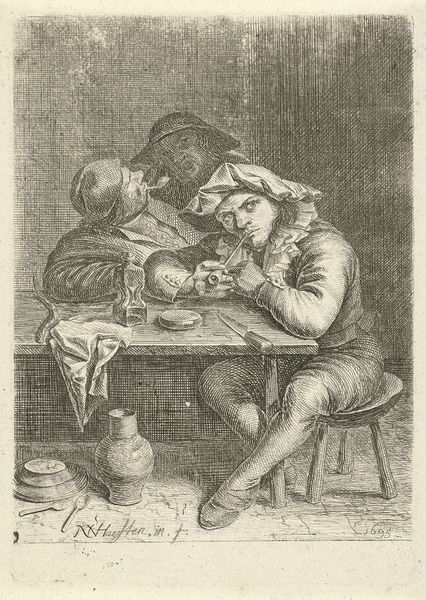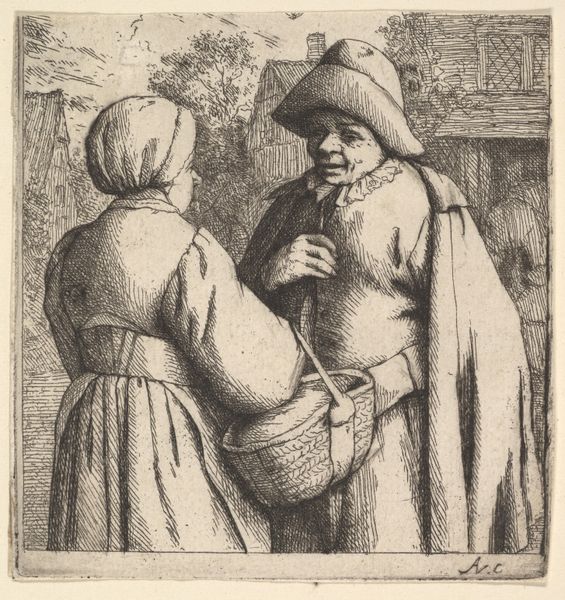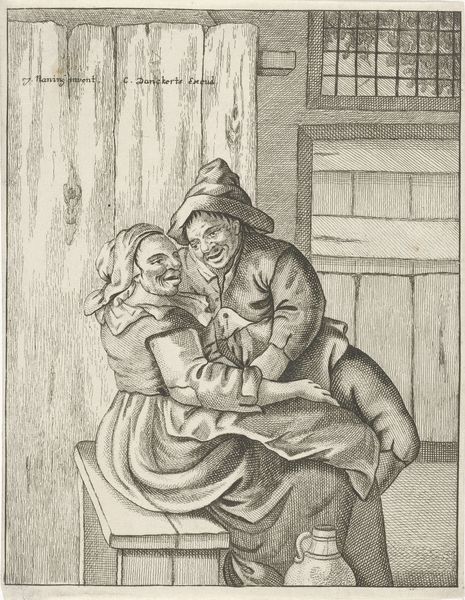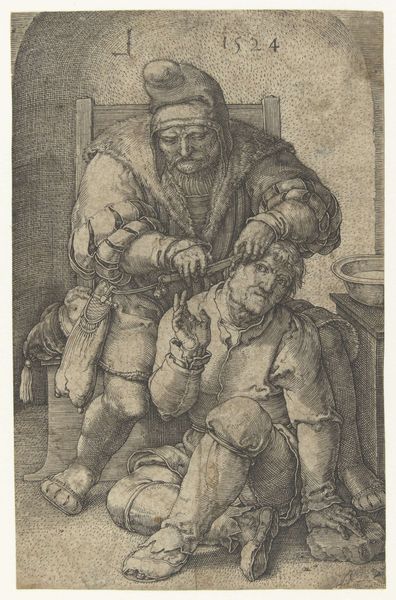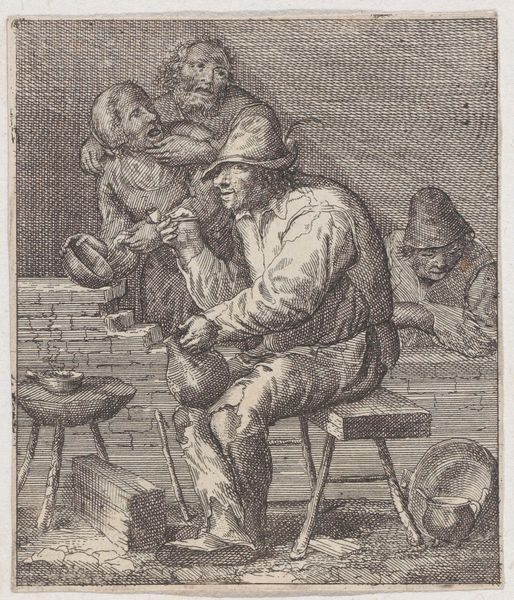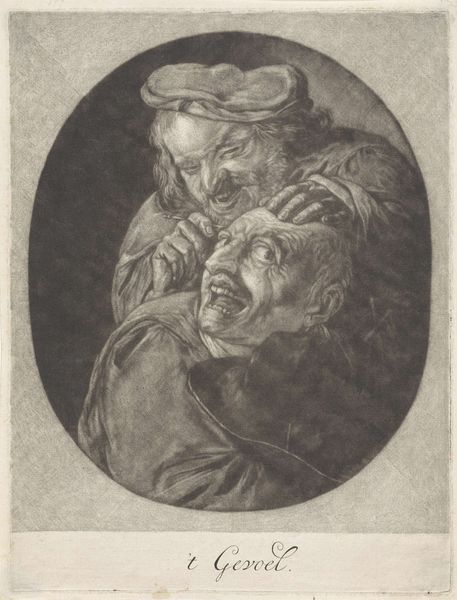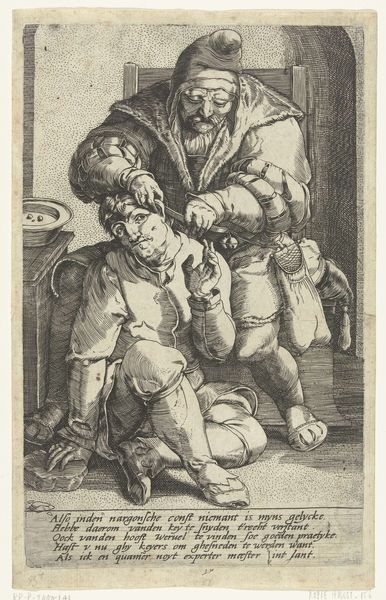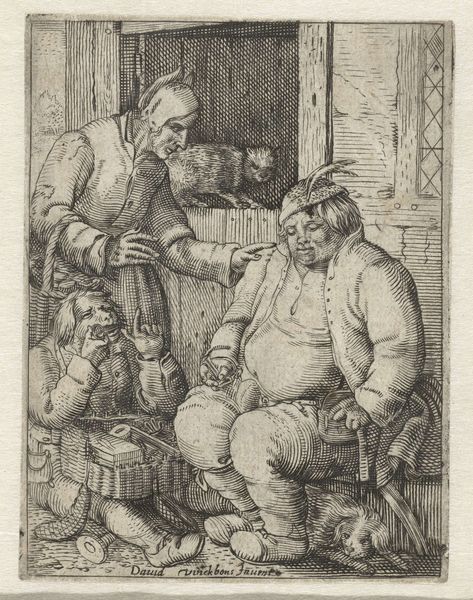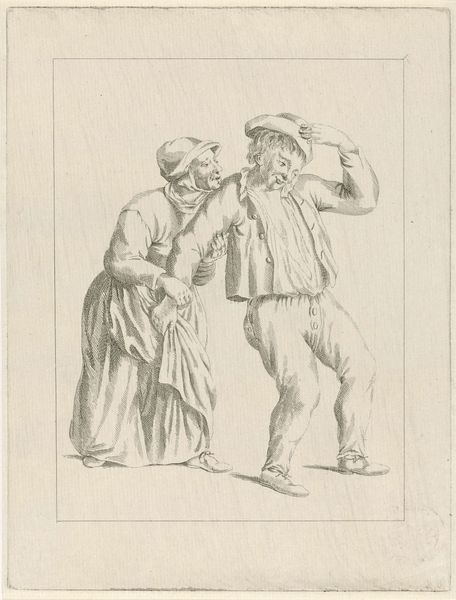
Dimensions: height 330 mm, width 274 mm
Copyright: Rijks Museum: Open Domain
Curator: Here we have "De rommelpotspeler", or "The Rommelpot Player", an engraving by Pieter de Mare, made sometime between 1768 and 1796. Editor: My initial impression is one of raw joy, almost bordering on the grotesque. The etched lines create such depth and texture, particularly in the faces and clothing. It feels incredibly tactile. Curator: Indeed. These types of genre scenes from the Baroque period often reflect complex social realities. These players, for instance, typically travelled from door to door making music. It tells stories about precarity and community bonds. The rommelpot itself was typically associated with winter festivities, but these celebrations are sometimes about carnivalesque inversions of social status. Editor: The instrument seems crudely made—a skin stretched over a pot with a stick creating a sort of droning buzz. But, focusing on form, I’m struck by the diagonal composition created by the instrument, and by the almost palpable texture that Mare manages to convey just through line work. Curator: The grins themselves, somewhat unsettling by today's standards, would’ve resonated with period understandings of pleasure, labour, poverty, maybe even an embrace of communal noise at odds with an ordered existence. The man’s clothes look worn; and this is a world away from formal portraiture of the elite classes, in its portrayal of work and the popular classes. The child leaning into him, and their matching hats suggest some kind of familial relationship. Editor: Note the strategic use of light and shadow—the man's face, particularly his brow and teeth, seem to emerge dramatically out of the dim backdrop. I notice too, the density of line suggesting form: see the sleeves and how they billow to emphasize its volume! It's as if de Mare understands his image-making through contrasting form with pure structurality of line. Curator: Looking at the artist himself, it's significant that de Mare was working during a time of social upheaval, with emerging enlightenment ideals also confronting deeply entrenched social hierarchies. It really provokes reflection on what art gets preserved. This is so compelling as it is preserved today in the Rijkmsueum in Amsterdam. It urges conversations around identity. It prompts us to investigate this kind of folk figure now. Editor: For me, this engraving is a brilliant display of texture, volume, and, despite its age, palpable emotion communicated with exceptional precision and deliberate lines, an evocative glimpse into a past world. Curator: For me, Pieter de Mare's "The Rommelpot Player" speaks to enduring conversations about class, festivity and marginal lives, asking us to consider how art reflects—and shapes—our understanding of social roles and inequalities.
Comments
No comments
Be the first to comment and join the conversation on the ultimate creative platform.
